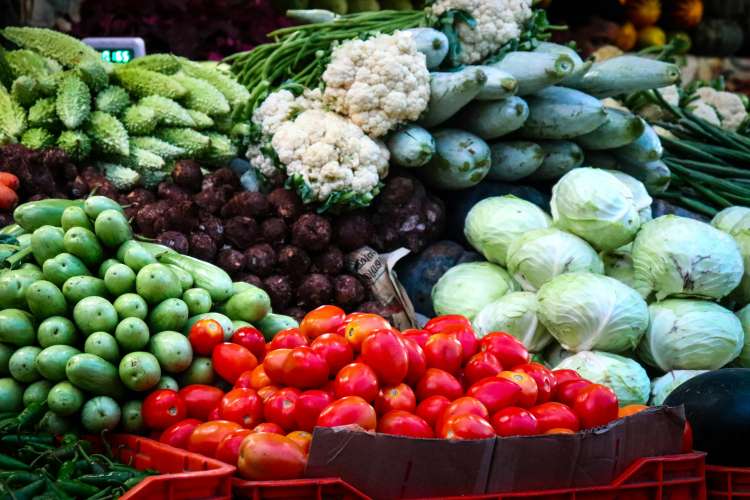
Food inflation soars: Amid the Reserve Bank of India’s efforts to rein in runaway prices, retail inflation slid to an 11-month low in April 2024 at 4.83%, slightly below 4.85% recorded in March 2024. The Consumer Price Index inflation, which directly impacts consumers, is higher than the April 2023 level of 4.70%, according to data released by the ministry of statistics and programme implementation. These inflation figures are unlikely to influence the Monetary Policy Committee meeting in June to change its stance. India’s fall in retail inflation rate is mainly due to lower fuel prices, although food prices remained high in April.
Global factors play a significant role in shaping India’s inflation trajectory. International commodity prices, particularly for oil and other essential imports, can significantly influence domestic fuel prices and transportation costs. Geopolitical tensions, disruptions in global supply chains, and fluctuations in global demand can lead to price hikes that will be transmitted to Indian consumers.
READ | India seeks to balance cryptocurrency regulation with market growth
Why inflation figures matter
Inflation affects different economic classes in various ways. Higher inflation particularly impacts lower-income households, which typically allocate a larger share of their budget to essential goods and services. These items are most susceptible to inflation, straining household budgets. Additionally, these households often have limited savings and access to financial instruments that can help offset inflation, making its effect even more severe.
In April, rural inflation stood at 5.43% compared with 5.51% in March 2024, while urban inflation was 4.11%, down from 4.14% the previous month. Economists attribute higher rural inflation to a different food basket, which includes more basic food items. Urban areas, with their diverse consumption habits and inclusion of processed foods, experience different inflation dynamics.
The RBI’s mandate is to keep inflation at 4% with a 2% margin on either side. Core inflation softened to its lowest ever level of 3.2% in April 2024, from 3.3% in the previous month.
Food inflation: Concerns and predictions
Food inflation remains a concern, rising to 8.72% in April 2024 from 8.52% in March 2024. Inflation in the food and beverages group also increased to 7.9% in April 2024 from 7.7% in March 2024. Vegetable inflation stood at 27.8%, and pulses at 16.84% in April 2024. Food inflation, which has a 39.1% weightage in the CPI gauge, remains pressured, partly due to ongoing heat waves. Within the food category, inflation stayed high across several segments such as cereals, meat and fish, eggs, vegetables, and pulses.
Vegetable inflation is not expected to fall in May because of heat waves. Since Indian agriculture heavily relies on favourable natural conditions, any negative impact on crops could spell disaster. Cereal and pulses prices are likely to remain high until the next harvest. Well-distributed monsoon rains are key to alleviating food prices. Although the IMD expects a normal monsoon in 2024, the prolonged heatwave could negatively affect early-year food production.
Economists predict that the inflation trajectory will normalise by September or October 2024 as many kharif crops enter the markets, supplementing the existing supply. In the non-food category, inflation remained subdued across most segments, including clothing and footwear, household goods and services, and recreation and amusement.
Beyond these immediate concerns, long-term trends in global food prices due to climate change and population growth can also influence India’s food security and inflation. Mitigating these risks requires a focus on sustainable agricultural practices, improved irrigation infrastructure, and diversification of crop production.
To address these issues, the government must adopt a multi-pronged approach to inflation management. This includes not only monitoring and controlling food prices but also ensuring adequate infrastructure and supply chain improvements to mitigate the effects of seasonal and weather-related disruptions. Investment in agricultural technology and irrigation systems can help stabilise food production, thereby reducing the volatility of food prices. Furthermore, enhancing market access for farmers through better transportation and storage facilities can prevent price spikes caused by supply bottlenecks.
Inflation may not significantly impact election results, but it certainly affects voter sentiment. Amid national elections, the government is concerned about high food inflation and has taken steps to mitigate it. India, the world’s biggest consumer of pulses, removed import duties on some varieties to cool off prices. Levies on chickpeas were scrapped, and tax-free imports of yellow peas were extended. However, the government faces a balancing act between pleasing consumers and farmers. While consumers may benefit from lower prices, farmers might be discouraged from increasing crop plantings.
The RBI’s role in managing inflation through monetary policy remains crucial. However, this must be complemented by effective fiscal measures from the government. Tax reliefs, subsidies for essential goods, and social welfare programs can provide immediate relief to those most affected by inflation. Coordination between monetary and fiscal policies is essential to create a balanced approach that addresses both short-term pressures and long-term economic stability.
The zero-duty import policy is likely to affect farmers, as cheap supplies from overseas will pressure domestic prices, according to the India Pulses and Grains Association. Additionally, the government lifted a ban on onion exports and imposed a 40% duty on overseas shipments to cool off prices.

